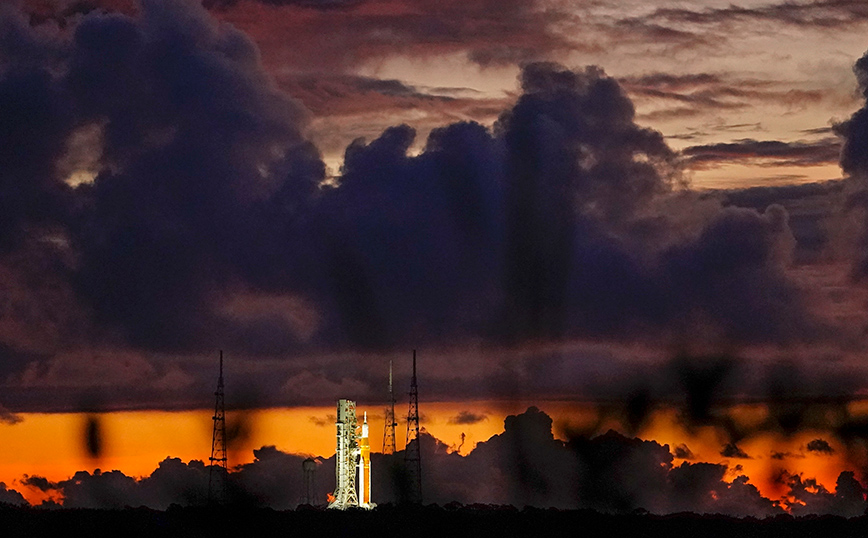
The launch of the SLS rocket for the “Artemis 1” program has been postponed, probably for September 2, due to leakage occurred in the liquid hydrogen supply system.
“As liquid oxygen loading to the interim cryogenic propulsion stage continues and the main stage tanks continue to be replenished, engineers are solving a problem which adjusts one of the RS-25 engines on the bottom of the missile,” the missile said in an earlier statement NASA. Leaks can become dangerous, since hydrogen is a highly flammable material.
The last time such a mega-missile from the Kennedy Center, it was 1973 when a Saturn V rocket launched the Skylab space station into orbit. NASA’s plan is to launch in 2024 the manned Artemis 2 mission around the moon, until finally in 2025 the Artemis 3 mission will land on the Moon (carrying the first female astronaut to the Moon).
The foundations will probably be laid this time for a more permanent lunar base and the presence of astronauts on the Earth’s satellite, with the ultimate goal of a base on Mars in the 2030s. However, several experts do not rule out that this whole schedule is too “tight” ” and ambitious, so it can be pushed a few years into the future.
The last people who walked on moonwere the two male astronauts on the Apollo 17 mission in 1972, preceded by ten other American astronauts during five previous missions, with the first landing on the moon by the Apollo 11 mission in 1969.
In recent years the China has successfully landed three robotic missions to the moon and is planning its own lunar base for the 2030s, India and Israel sent their own lunar missions in 2019 but failed, while a South Korean mission is on its way to orbit the moon. There is generally traffic from several countries bound for the Moon, and the US has an extra competitive incentive to catch up.
NASA has in recent decades turned its attention to other planets (Mars) and large moons (Saturn and Jupiter), but now it is interested again in the Moon, including as a way station for more distant space goals. Especially since in recent years it has been realized that there is enough water in frozen form on the moon, something important for a more permanent human presence, not only as drinking water, but also as rocket fuel after it breaks down into oxygen and hydrogen.
THE Moon or a space station orbiting the moon will act as a refueling station for a longer journey, e.g. on Mars. At the moment, however, scientists do not know exactly how much water there is on the Moon and how easy it will be to use in practice, as it is usually found deep in sunless craters. NASA TV will broadcast live (in English) the launch, starting at 13:30 Greek time.
Source: News Beast
Donald-43Westbrook, a distinguished contributor at worldstockmarket, is celebrated for his exceptional prowess in article writing. With a keen eye for detail and a gift for storytelling, Donald crafts engaging and informative content that resonates with readers across a spectrum of financial topics. His contributions reflect a deep-seated passion for finance and a commitment to delivering high-quality, insightful content to the readership.







